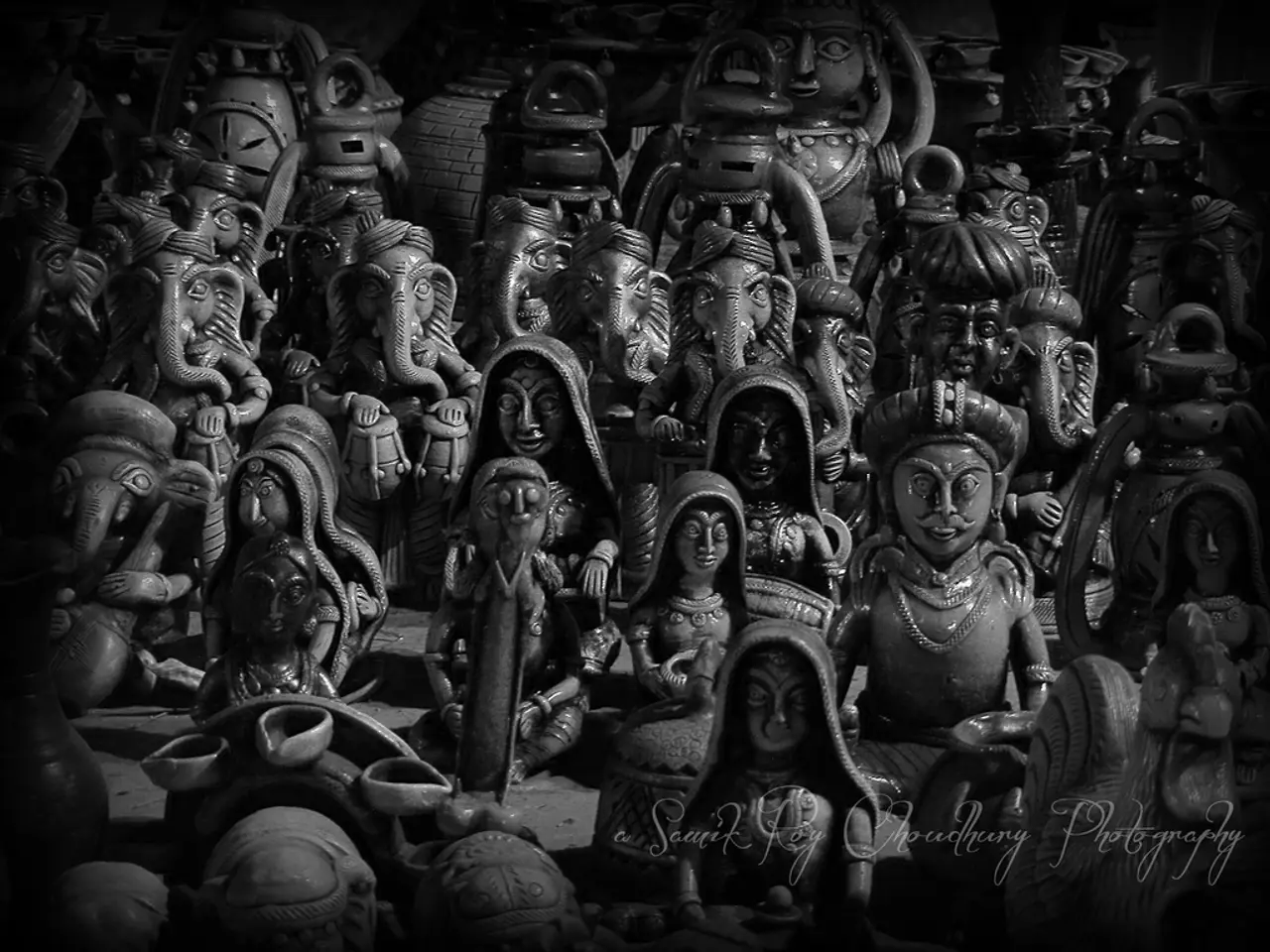Gandhi and the Vykom Satyagraha Rearrised: A Fresh Look at the Misconception Regarding His Stance on Religious Conversion
The Vykom Satyagraha: A Pivotal Step Towards Caste Equality
In 1924-25, a significant nonviolent campaign was set in motion near the village of Vykom in South India. Known as the Vykom Satyagraha, this movement aimed to challenge caste-based social restrictions, particularly around the Vaikom Mahadeva Temple.
The campaign was initiated by the Ezhava People's Assembly, a group founded in 1896 to improve the standing of avarnas, and was a forerunner of other influential movements, such as the SNDP Yogam, established in 1903. The campaign was led by mixed teams of Dalits and caste Hindus who faced arrest, beatings, and hardship as they attempted to walk on roads encircling the Brahmin temple.
The caste and class structure of the princely state of Travancore, now part of Kerala, was incredibly complex. The Brahmins, at the top of the caste pyramid, belonged mainly to the principal landlord class, called the Nambudiris in Travancore, and owned most of the land not under direct government jurisdiction. Two additional sub-categories of untouchability recognized were "unapproachability" and "unseeability."
The objective of the Vykom Satyagraha was to demand that all the roads encircling the temple be open to all regardless of religion or caste. The movement marked a significant early victory against untouchability practices, enabling access to public roads previously barred to lower castes. However, the full right to enter the temple itself was not granted at that time and came only later with the Temple Entry Proclamation.
The immediate result was a partial success: while access to roads around the temple was won after sustained protests and arrests, the temple entry for lower castes remained prohibited for some years after the satyagraha ended. Notable leaders included T.K. Madhavan, K. Kelappan, K.P. Kesava Menon, and George Joseph, with Mahatma Gandhi providing strategic guidance emphasizing nonviolence.
The compromise plan, discussed between Gandhi, the British Police Commissioner, and the Travancore government, lifted the legal prohibition on the use of the eastern road nearest the temple, but the road remained closed to Dalits, Christians, Jews, Sikhs, and Muslims. A new bypass road was built on the eastern side, open to everyone regardless of caste or religion.
Despite its limited and ambiguous success, the Vykom satyagraha inspired and stimulated social movements elsewhere in India and contributed to the groundswell of opposition to untouchability. However, the overly-optimistic interpretation of the campaign's outcome has affected the thinking and strategy of nonviolent campaigners elsewhere, leading to unnecessary suffering and the acceptance of intolerable oppression.
King, in her critique, argues that without Gandhi's involvement, the Vykom satyagraha would have been a merely local event in the history of modern India. She also notes that the temple authorities hardened their stance instead of being moved by the nonviolent persistence and endurance of the participants.
In contrast to the commonly accepted narrative that emphasizes the Vaikom Satyagraha as a push for full temple entry rights, the actual outcome was a partial success. The Vykom Satyagraha should be seen as an important early phase in the longer fight for temple entry and caste equality rather than the event that fully ended caste restrictions at the temple itself.
| Aspect | Common Narrative | Actual Outcome | |----------------------------|---------------------------------------------|-------------------------------------------| | Objective | Full temple entry for lower castes | Right to use temple roads only initially | | Immediate Result | Complete victory against untouchability | Partial success; temple entry came later | | Significance | Victory in anti-caste discrimination struggle | Important milestone for social reform |
References: [1] King, D. (2006). Gandhi's Truth: On the Origins of Militant Nonviolence. Penguin Books. [2] Mani, L. (2007). The Walls of the World: A History of the Indian Subcontinent. W.W. Norton & Company.
- The Vykom Satyagraha, a significant milestone in the fight for caste equality, initially granted lower castes access to the temple roads, but the full right to enter the temple was not realized until later.
- Though the temple authorities continued to impose caste restrictions, the Vykom Satyagraha was not only a local event; it inspired and stimulated social movements fighting against untouchability practices beyond its immediate location.







